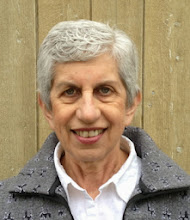
Do you tend to have people around you who are different from you and each other? Do you interact with them as individuals? Do you look for patterns in the world around you? Do you tend to do several things at once? Do you partner with others in order to accomplish tasks? Is it easy for you to see how you and the people around you make a difference together? Do you see the events around you as unfolding based upon what came before? Do you see them as a kind of evolution? Do you sense that there are many truths, which grow from varying circumstances?
This is an interpretation of one of four strongest mindscapes found in research by Professor Emeritus Magoroh Maruyma in some very interesting work he has done in the field of psychology and sociology. He argues that his methodology works over cultural borders as there are many more similarities between people of like mindscapes than there are between people from the same country. His work has an esthetic aspect as well. Professor Maruyma has found that individuals have an audio/visual preference related to redundancy (repetition) and symmetry or harmonic interactivity among dissimilar elements. He calls this entire spectrum the degree of nonredundant complexity. Examples of this for the mindscape above are: some traditional Japanese gardens and floral art, Picasso’s Guernica, Stravinsky’s Rite of the Spring, Richard Strauss’ Ein Heldenleben and Pergamon in Greece.
The more we understand about the possible preferences of the brain and the senses in making decisions, the better we can understand the individuals and the society around us. This is complicated business as Professor Maruyma has shown. Even though he was able to identify the four strongest mindscapes there were others, not as strong, but still relevant for individuals that exist. Putting people into categories is something that our brains tend to do, some more or less than others. For every stereotype you can identify, there will be some exception. This body of research has much to offer Foresight Styles. You may not feel at home with the above description; remember that there are others and that life is diverse and everyone is needed. As we look at such complex research we begin to understand just how that complexity is reflected in us.
On that rather complex note, have a relaxing and healthy summer. You can look forward to more insightful articles from The Foresight Files in the fall.



No comments:
Post a Comment